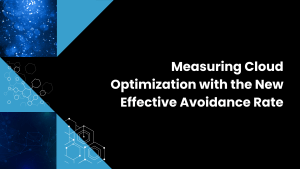The terms and size of Intel’s recent investment in Cloudera have been revealed and, as you probably know by now, both are considerable. Intel has invested $740 million in Cloudera for an 18 percent ownership stake in the company. The Intel investment follows fast on the heels of a $160 million investment in Cloudera led by T. Rowe Price. For those keeping track, that’s $900 million raised in about a week and a half for Cloudera.
But that doesn’t mean that Cloudera has $900 million in cash sitting in the bank. Not uncommon in these types of investments, part of Intel’s investment likely bought out the shares of most of Cloudera’s initial investors, founders and early employees. How much is hard to say, but my hunch is that its a large enough portion of the total $740 investment that it leaves Intel as the dominant shareholder. I don’t think Intel makes this deal otherwise. Still, Cloudera has the $160 million from the T. Rowe Price investment to play with, plus whatever is left from Intel’s shareholder buyout.
To me, this investment says a lot more about Intel than it does Cloudera. So why did Intel make this investment (the largest investment in a private software company ever), which, while not an acquisition, gives it an influential stake in an open core Hadoop vendor? I think there are three main reasons.
- Intel Needs the Enterprise. Intel can’t afford to lose the enterprise market. The PC market is in decline, and the enterprise, along with mobile, is key to Intel’s longterm growth. The world of enterprise computing is moving from one of proprietary, scale-up systems to open source/open core systems and distributed architectures where data is the new code. Hadoop in many ways is at the heart of this transformation, at least from an analytics perspective. With this investment, Intel has an influential stake in the leading Hadoop vendor (by revenue) and will tightly integrate its x86 architecture with Cloudera’s platform. The more nodes in production the more chips Intel ships. The company’s investment validates the Hadoop market generally and Cloudera specifically.
- The Internet of Things Needs a Home. Related to its focus on mobile, Intel is betting on what it calls the Internet of Things (IoT), developing new lines of chips to bring the physical world online. All that data needs a home, namely a platform where it can be analyzed and where developers can build data-driven services. Intel and Cloudera are likely to begin optimizing the latter’s technology to serve as such a platform. The result could be a Cloudera-based analytics and application development platform optimized to crunch and analyze data flowing from Intel chips, rounding out Intel’s IoT story.
- Cloud is the Future. While it is early days for cloud when it comes to Hadoop deployments, we at Wikibon firmly believe the future will see Big Data technology supporting value-add services from public cloud and semi-public cloud providers, including mega-datacenters. In this scenario, ISVs will leverage cloud-based Big Data platforms to enable rapid application development and deliver services to both enterprise customers and consumers. This applies directly to Intel’s IoT initiative, and Cloudera has already begun making moves to the cloud (as was part of the company’s original vision, but was unrealistic to execute in 2009 when cloud computing was even more immature than it is today.) If I were in Intel’s position, I would use this investment in Cloudera to begin building a cloud-optimized Big Data platform to enable such application development by other ecosystem players. Think of it as Intel-Cloudera Inside, but instead of inside your PC, its inside your cloud-based Big Data services.
For Cloudera, the two deals are good ones. They give the company the working capital it needs to deliver on its Enterprise Data Hub (EDH) vision and is a sign that the new management team is really raising the bar on its ambitions as a company. Cloudera can now invest aggresively in growing its sales operation, developing its platform and laying the groundwork for a cloud-based future. It also takes some pressure off the company to go public and let’s it focus on execution.
Competitors Around Every Corner
All this isn’t to say there aren’t a number of challenges and risks for both Intel and Cloudera. Namely, there are competitors around just about every corner, and I don’t expect them to cede ground to Intel and Cloudera without a vigorous fight.
Cloudera CEO Tom Reilly announced last fall that he intends to take on IBM and Pivotal in delivering a comprehensive data platform with EDH, and these investments allow him and his team to credibly do so. But its clear from feedback I’ve been getting from the Wikibon community that IBM and Pivotal aren’t the only competitors taking notice. SAP, Teradata and Microsoft – all of whom want to own the Big Data platform and already have firm positions in the data management market – also took Cloudera’s stated ambitions as a shot across their collective bows.
With this investment in Cloudera, Intel is effectively taking on these data center incumbents itself. Each are more experienced in selling data management and analytics software to the enterprise than Intel and each have partnered closely with Hortonworks to deliver their own versions of a comprehensive data platform. IBM and Pivotal, meanwhile, likewise have vastly more experience than Intel in selling enterprise software, plus formidable research and development arms pushing the envelope with innovations in Data Science and cognitive computing. As I wrote last week, Intel creates an important new channel for Cloudera, but it is far from a sure thing that Intel can replicate its hardware selling prowess when it comes to enterprise software. Time will tell.
When it comes to the Internet of Things and cloud, there are likewise a number of worthy competitors to consider. One is the Pivotal-GE alliance, which is playing the long game and developing a hybrid cloud platform and related standards to support the Industrial Internet, an important (and potentially more valuable) subset of the IoT. Then there’s Google. The search giant is making investments of its own in IoT, most notably with its recent acquisitions of Nest and DeepMind. And we know Google has the analytics and cloud chops to enable intelligent applications that make sense of all the data flowing off newly censored physical objects (people, via Android OS on mobile devices, included.)
Then there’s elephant in the room … Oracle. As John Furrier wrote earlier today, the Intel investment allows Cloudera to get the Oracle monkey off its back. But it also puts Cloudera in direct competition with what was (until last week) it’s most important channel partner.
Why Not Spread its Bets Around?
Another question I have is why Intel felt the need to invest in one Hadoop vendor over another. Hadoop is an open source framework, and Intel could, with a much smaller investment, collaborate with the Apache Hadoop ecosystem to build out some of the same capabilities it is likely to build out with Cloudera (chip-level integration, optimization for IoT, cloud-based platform, etc.) It would then benefit from increased Hadoop adoption generally rather than Cloudera customer adoption specifically.
Most likely, Intel believes it is in its longterm strategic interest to have some level of ownership over the development of these capabilities, which a massive investment in the Hadoop market leader potentially gives them. I think this mindset meshes well with that of Cloudera, whose ambition is to deliver a comprehensive data platform through the development of its own IP on top of an open core rather than through just the Apache Hadoop community and partners.
Going forward, keep an eye on the above areas for moves from Intel and Cloudera, and expect to see co-innovation and marketing initiatives from the two. I wouldn’t be surprised if we see counter-moves from some of the competitors either, particularly from data management incumbents like SAP and Microsoft. The game is on.


